
After 37 years, I return to this singular Greek island — virtually a country to itself in size and culture — and bring Thor along to meet “glorious Kriti.”
I was a hippie backpacker in my twenties when I first followed my childhood dream to visit Greece, home of the dramatic Olympian deities, Classical marble statues, and the early stirrings of democracy. I had inhaled Greek mythology ever since I could read, but didn’t know a lot about the earlier Minoan culture of Crete. My travel partner and I simply decided to take the night ferry from Athens to this largest and southernmost Greek island, camping out on deck through a fierce storm and then approaching the island as dawn sunlight spilled over the mountains and dolphins frisked around the bow of the ferry. I was in love with the island even before disembarking. And as we visited and camped in ancient Minoan sites, I fell even harder for the mysterious and beautiful remnants of the vanished culture here that was the basis for the lost Atlantis myth. The story of princess Ariadne and the Minotaur’s labyrinth gave rise to my own novel finished many years later, THE ARIADNE CONNECTION.
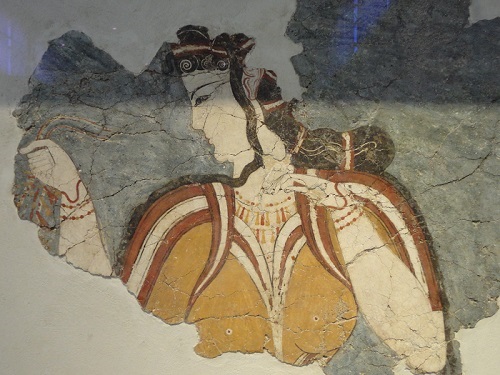
I’m happy that Thor loves the Greek islands as much as I do. We weren’t planning a return this year, but since we’ve both been rehabbing for months with different mobility issues, our physical therapists advised more warm weather and swimming. “Chairete!” (Rejoice!) What could be better for extending summer and swimming than the Greek islands? And now we could add Crete to our ferry-hopping. But first, the gateway city of Athens. We’re not jaded enough to skip another visit to the Acropolis and the Parthenon, temple of Athena.
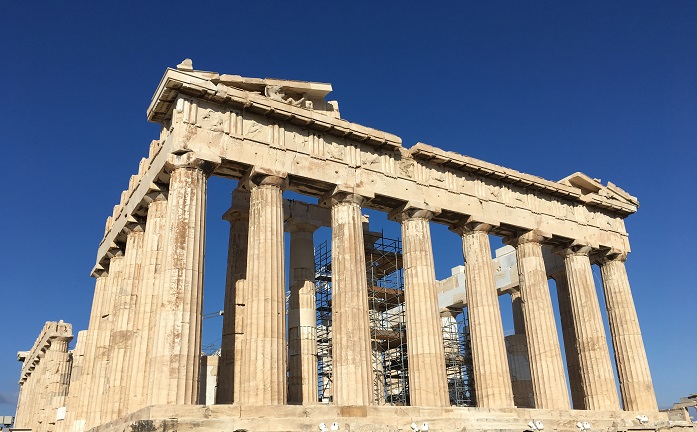
It’s always windy atop the high outcrop overlooking the city, and this year we really had to hang onto our hats and everything else! Crowds are a given, as this symbol of democracy and Classic proportions still attracts pilgrims from all over the world. A young Asian woman made it clear with sign language that Thor and I needed to have our photo taken together.
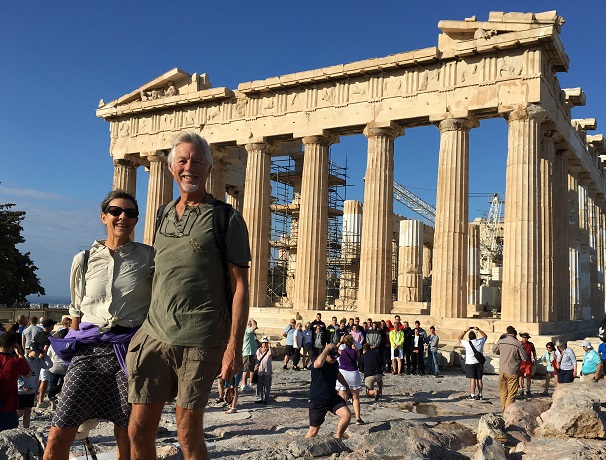
For friends who’ve expressed interest in the Asklepion, or healing sanctuary at the foot of the Acropolis, beneath the towering stone wall, here is the temple of the healing god Asklepios. Behind it in a small cave was the location of the sacred healing spring.
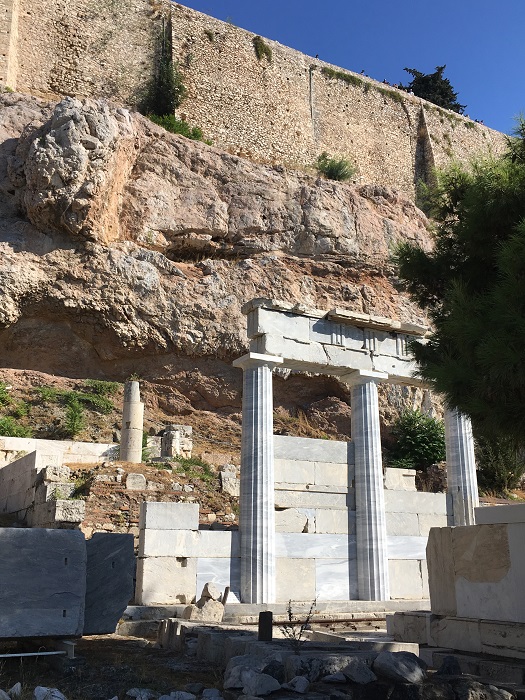
A stroll through the city’s historic core will turn up layers of history everywhere you look. Here, at the foot of the Acropolis, are Venetian-era buildings framing a view of the Tower of the Winds built as a “horologion” or timepiece and weather station around 100 B.C. The octagonal tower features on each side an image of one of the eight deities of the winds, including Boreas and Zephyros. It originally had a Triton-shaped wind vane on top, as well as sun dials and a water clock.
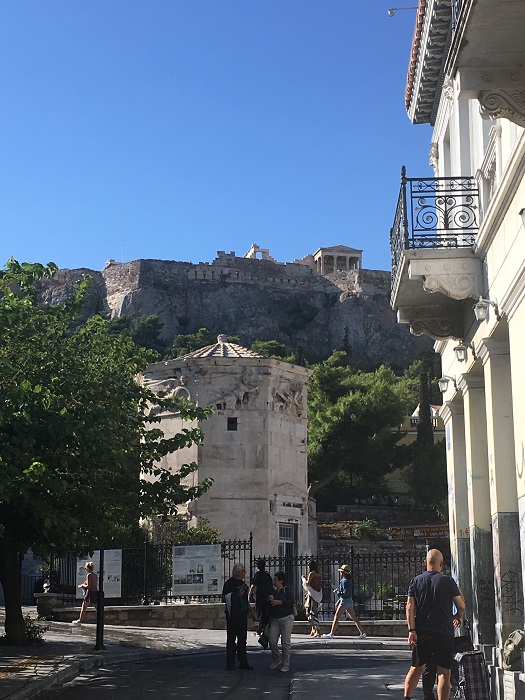
The later Byzantine influence is prominent in old and new Greek Orthodox churches with their many holy icons.
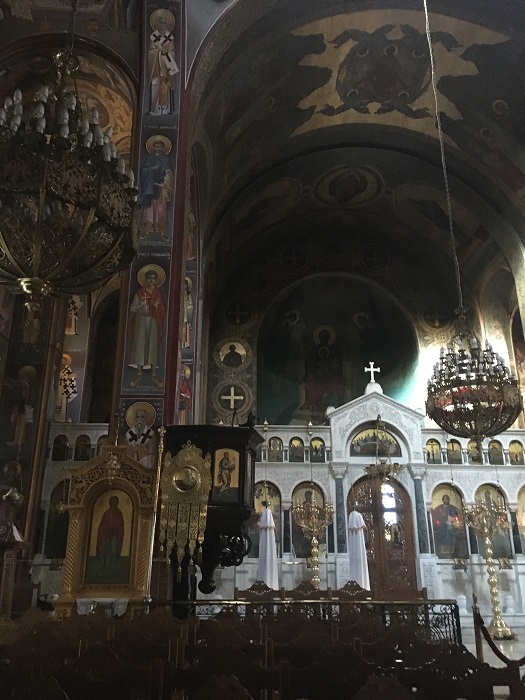
So, after a return visit to the wonderful Museum of Archaeology, where we petitioned Poseidon (and Zephyros for good measure) for calm seas after last year’s Cyclone Zorba, we headed south for Crete.
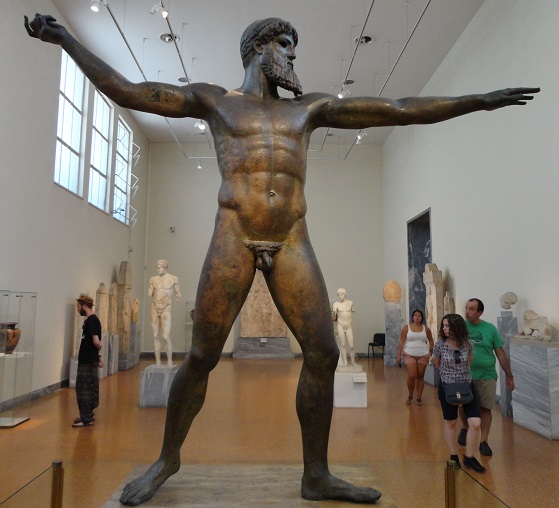
This time logistics dictated flying to the island’s main city of Heraklion, where we rented a car and headed along the north coast highway toward historic Rethymno.
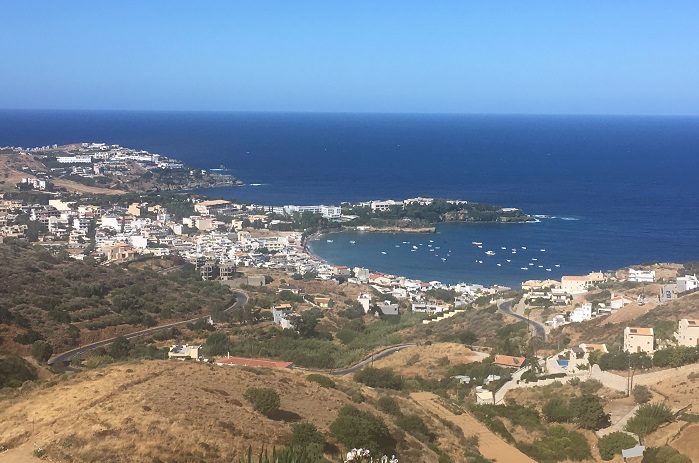
We’d booked a small B&B in a refurbished old building for one night in the Old Town, where cars were excluded, and enjoyed strolling around the cobbled lanes with Venetian and Turkish buildings.
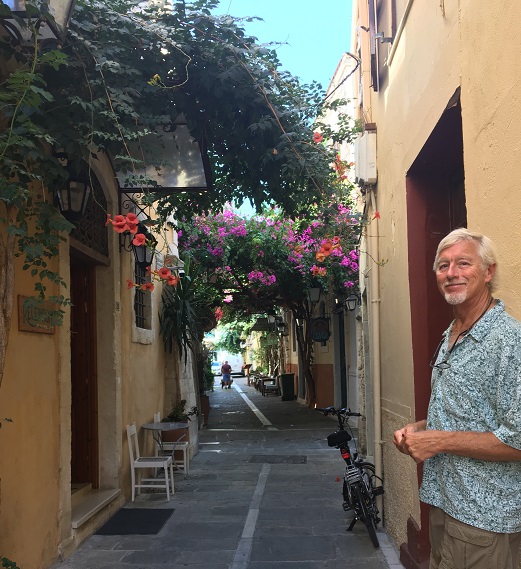
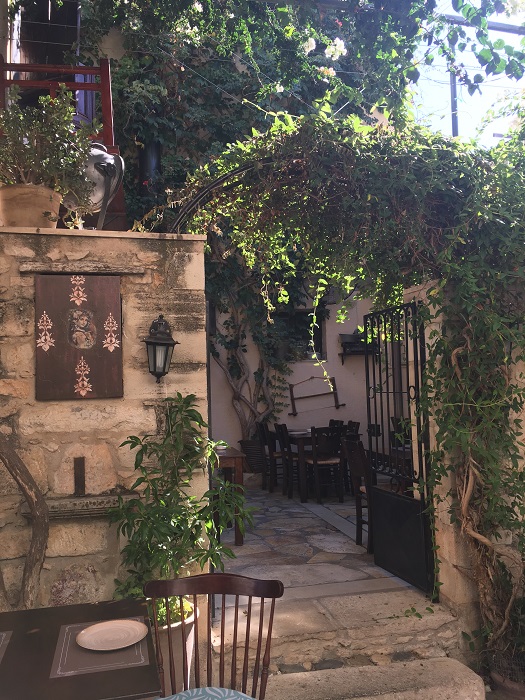
We had a delicious dinner at an open-air garden restaurant next to the Turkish Neratses Mosque, now used for concerts.
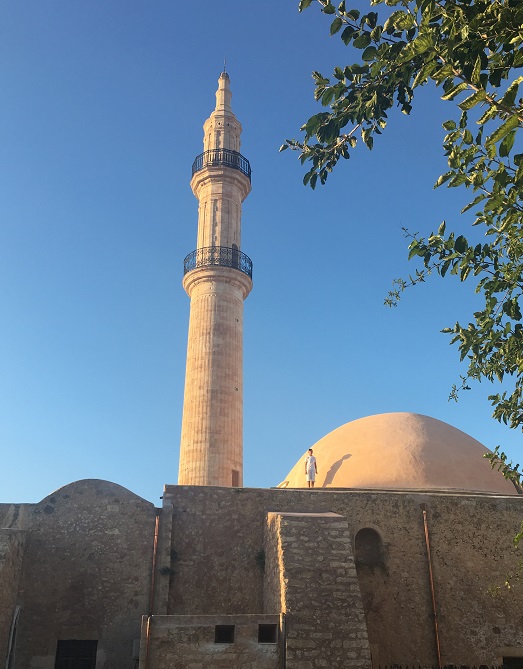
After sunset, we continued our rambling around Old Town, past the Venetian Fortezza built in the 1500s (more history below).
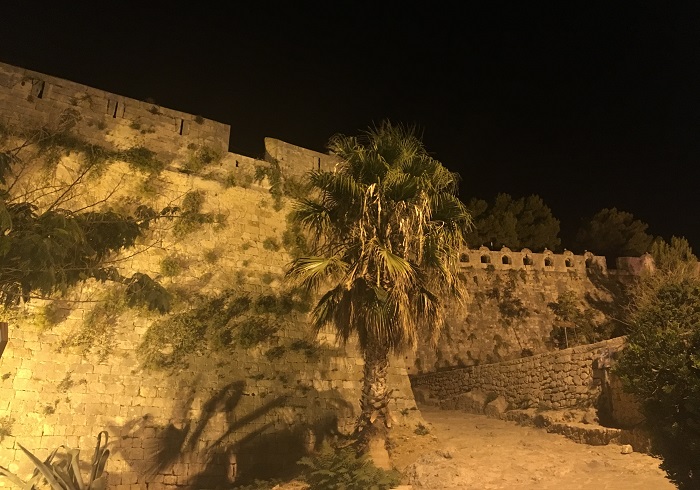
We followed the flow of lanes, cafes, and shops past the Rimondi lion fountain built by the Venetians in 1626 to funnel 3 natural springs and provide water for the residents. In this land of many springs replenished by the mountains, it still gurgles with fresh water.
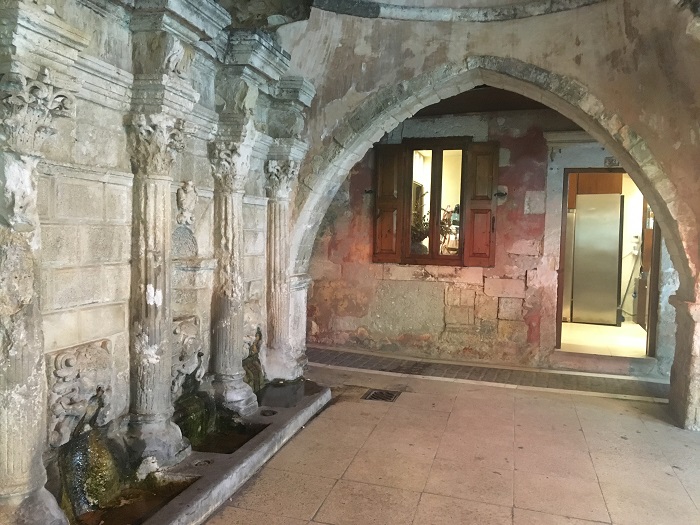
And, like all tourist attractions, Old Town has its share of glitzy new shops vying for euros. Thor loved this shop featuring cosmetics made from Cretan olive oil and snail slime/saliva.


The next morning, before heading for the south coast and less-crowded beaches, we visited the Fortezza, supposedly the largest Venetian castle ever built. We can testify that its sprawling walls cover a lot of ground!
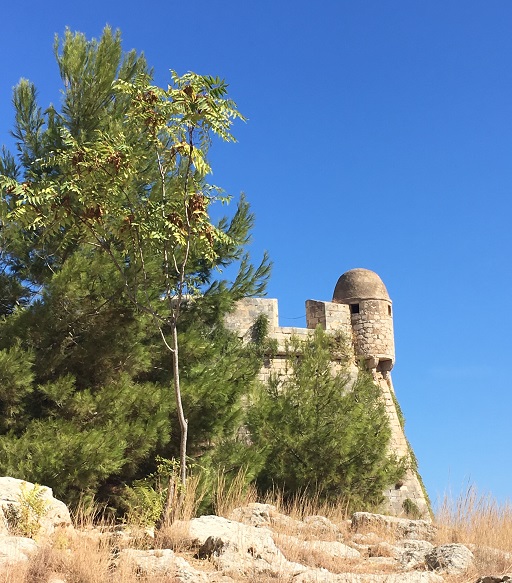
The entrance is through this gate, where a man was getting ready to pose in a traditional Greek guard uniform.
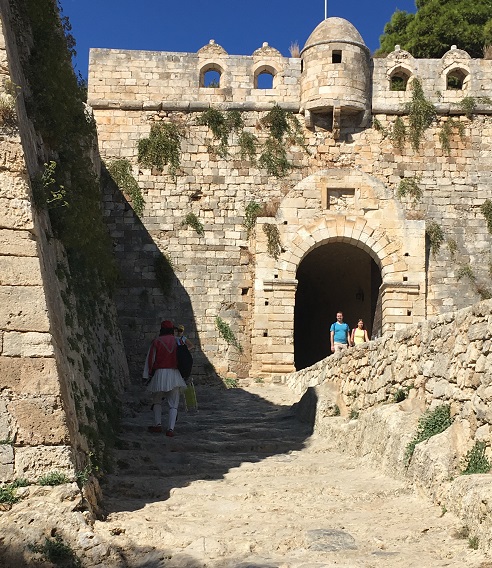
From the walls, a view to the West and the Lefka Ori, White Mountains. On my first trip, they were white with snow in March as I started the steep hike down the famous Gorge of Samaria, from mountains to sea. As I said, it’s a really big island!
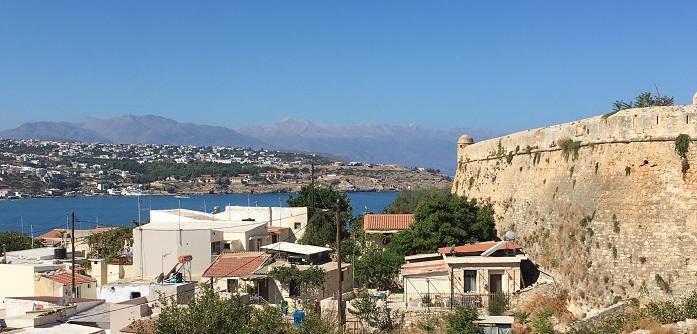
Ironically, the Venetians built the castle as a defense against the many pirates ravaging the town, including the infamous Barbarossa in 1538. The fortress took ten years to build, at disastrous expense. Then, in 1645, the city fell to the Turks in less than 24 hours of attack, when the Turks simply bypassed the fortress. Apparently the cannons were virtually useless as defense. The Turks built a mosque inside the walls:
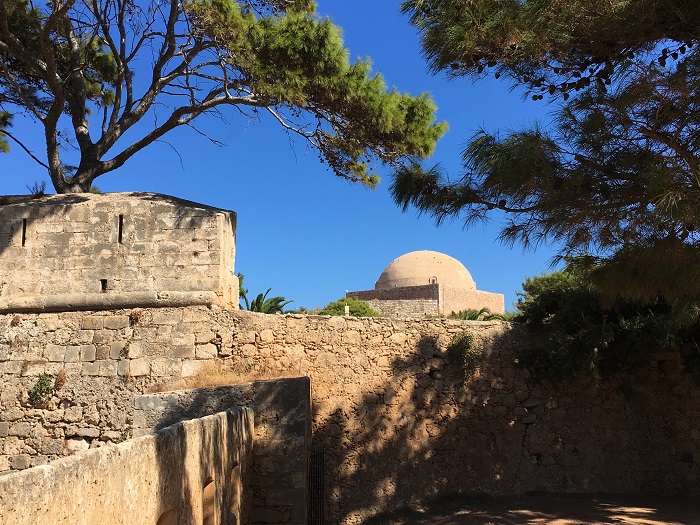
And now, as the tides of history rise and fall, there is once more a chapel inside the walls, this one Greek Orthodox.
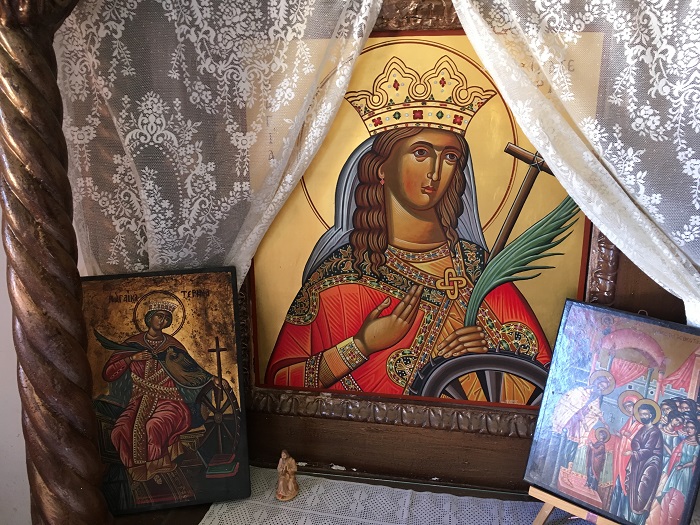
We then made a quick visit to the small but impressive archaeological museum next to the Neratses mosque. Its building was once part of a Venetian monastery, with a stately gateway to the square of Platia Mikrasiaton.
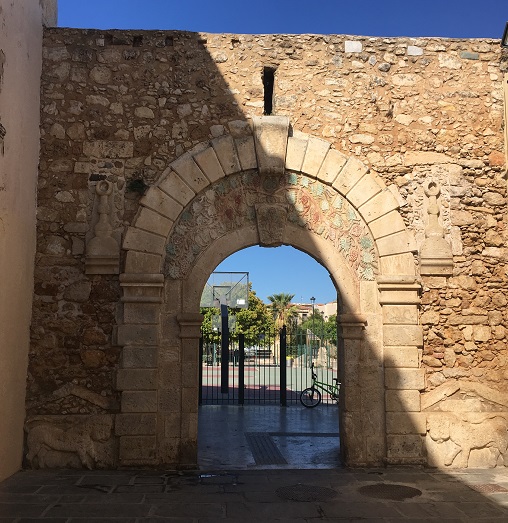
The museum houses a small but choice collection of Neolithic, Minoan, Classical, and Byzantine artifacts found in nearby excavations, including an inscribed stone tablet from around 600 B.C. that warned against excessive drinking. This beautiful marble statue of Aphrodite from the Roman era around 100 A.D. features the goddess of love with her right foot on one of her special animals, a duck. No idea why she’s doing that!
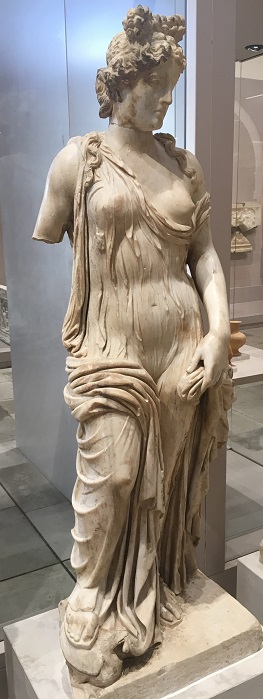
Dionysos, god of wine and ecstatic revelry, rides a panther on this bronze lamp from 100 B.C. He’s often depicted riding large felines.
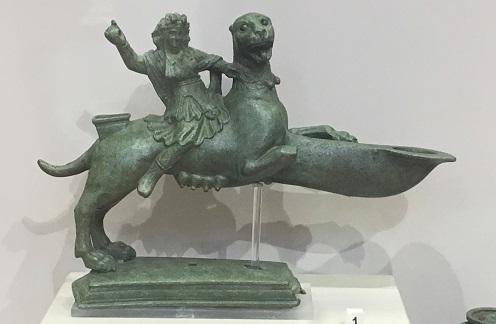
The most important collection is of Minoan and Mycenaean artifacts from the nearby ancient cemetery of Armeni. We’ll visit the cemetery and look at more of the artifacts in next week’s blog post, but meanwhile a teaser of a Larnax, or casket, from the site. To me, the images are strikingly similar to some found in ancient cave paintings and shamanic depictions.
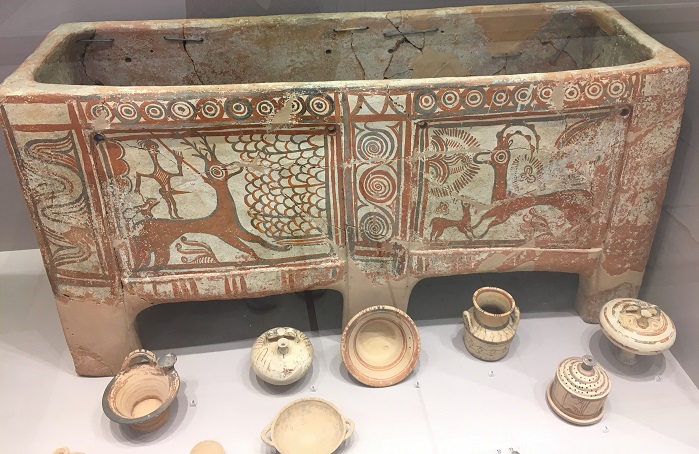
Workers continuing excavations at the site gave us permission to enter the underground tombs! Join us next week.
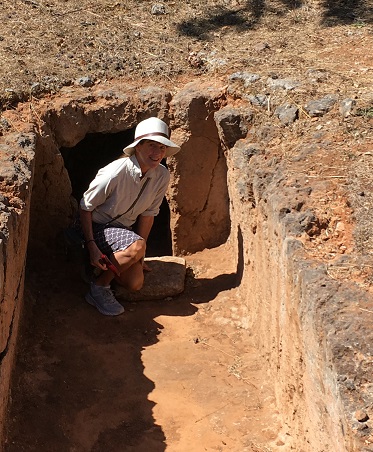
*****
You will find The Rambling Writer’s blog posts here every Saturday. Sara’s latest novel from Book View Cafe is available in print and ebook: The Ariadne Connection. It’s a near-future thriller set in the Greek islands. “Technology triggers a deadly new plague. Can a healer find the cure?” The novel has received the Chanticleer Global Thriller Grand Prize and the Cygnus Award for Speculative Fiction. Sara has recently returned from another research trip in Greece and is back at work on the sequel, The Ariadne Disconnect. Sign up for her quarterly email newsletter at www.sarastamey.com

1 thought on “The Rambling Writer Returns to Crete, Part 1: Rethymno”